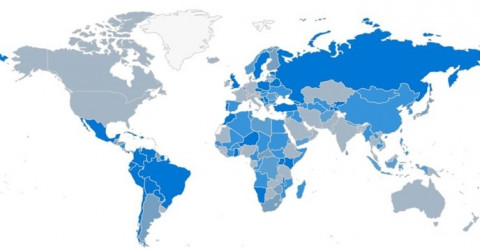
GCED Basic Search Form
Quick Search
You are here
News

On 5 July, UNESCO is launching a new Interactive Atlas of girls’ and women’s right to education as part of the Her education our future Initiative. The Atlas is a monitoring and advocacy tool, aiming to enhance public knowledge of the status of national constitutions, legislation and regulations related to girls’ and women’s education rights, as well as to monitor progress.
More than 70 years after the recognition of the right to education in the Universal Declaration of Human Rights, many girls and women cannot exercise their right to education due to gender inequality and discriminatory practices. Poverty, early marriage, and gender-based violence are just some of reasons behind the high percentage of out-of-school and illiterate girls and women globally.
Strengthening the right of girls and women to quality education through the implementation of international instruments is key to eliminate discrimination and to realize equality of rights between genders. This cannot be achieved without solid national legal frameworks that are rights-based, gender responsive and inclusive.
The international community has reacted to pervasive discrimination by adopting international human rights legal instruments such as the UNESCO Convention against Discrimination in Education or the UN Convention on the Elimination of all forms of Discrimination against Women(link is external). This commitment has been further reaffirmed by the Sustainable Development Goals, notably target 4.5, which explicitly requires States to eliminate gender disparities in education and ensure equal access to all levels by 2030. Indicative strategies include the necessity to strengthen national legislation related to gender equality in education.
The Interactive Atlas developed by UNESCO will enable better follow up of changes in the national normative frameworks that regulate girls’ and women’s right to education. This interactive tool currently uses 12 indicators to measure the status of national legal frameworks on girls’ and women’s right to education.
Based on the information collected and feedback received from States, the Atlas will be further developed and updated periodically until 2030 – the deadline set for Sustainable Development Goal 4. This first iteration includes information and data on 196 countries for the first three indicators and on 35 countries for the others, but the ambition is to expand to cover all States.
- Access UNESCO’s Atlas of girls’ and women’s right to education
URL:
https://en.unesco.org/news/unesco-launches-interactive-atlas-girls-and-womens-right-education
